This morning after breakfast we drove to Ronda and toured the Ronda Reservation, a breeding farm for fighting bulls and Spanish horses. It was declared a Biosphere Reserve by the UNESCO.
We first went into the museum where the matador costumes were on display. They are glittery and ornate, but actually, they are not very heavy. Bulls apparently are colorblind so the red capes are actually for show, but the bull does see movement and that’s what spurs him to lower his head and fight. They are trained to fight to the death… Which could either be the bull… or the matador. It is an extremely dangerous sport and if the matador isn’t adept, he can be gored to death. Just to be clear, the bull always meets it demise in the ring.
In a traditional bullfight, three matadors each fight against two out of a total of 6 fighting bulls, fighting to the death. If the matador has entertained the crowd with his skill, the fans wave white handkerchiefs to show that they are happy with his fight. Music will also play signifying a great job and the matador will cut off the ear of the slain bull. If the crowd continues to wave the handkerchiefs, the matador cuts off the other ear of the bull, and if they wave for a third time, the matadore will cut off the bull’s tail. Sometimes, the matadore will throw these body parts to the crowd.
Bulls are huge, weighing in at around 1,300 lbs. The fighting season is from March to October, but the sport has been declining in popularity because of animal rights groups.
We actually met the famous bullfighter Rafael Tejada today. He has always had a passion for bullfighting, but went to school and then to university where he earned a degree in engineering. He made a living as a civil engineer and then in real estate, but finally he could no longer ignore his passion for bullfighting.
He has built a home on the reservation and he breeds the bulls and the horses. We were able to see both animals in their natural habitat on the reservation, but because the bulls are so dangerous, we of course only viewed them from the bus.
After the reservation tour, we drove to the town of Ronda, which is known for its cliffs and deep canyon. We were able to walk across the Puente Nuevo bridge which was completed in 1793, taking 40 years to complete, along with the loss of many lives as they plummeted to their death into the chasm.
Many famous people have spent time in Ronda. Ernest Hemingway and Orson Welles spent many summers in Ronda and Hemingway wrote about his love for the place and also about bullfighting, which he was an avid fan of.
Orson Welles loved Ronda so much, when he died he arranged for his ashes to be buried in a well on the property of his friend, a retired bullfighter.
After the tour, Allan and I enjoyed a lovely lunch of tapas and meat croquettes and then we went back to the hotel to get ready for dinner. I opened our balcony door to let the seabreezes in and we just relaxed.
Then it was off to dinner at a restaurant with our group. The dinner was very good and plentiful.
Tomorrow is an early wakeup as we leave beautiful Torremolinos and travel to our next adventure.
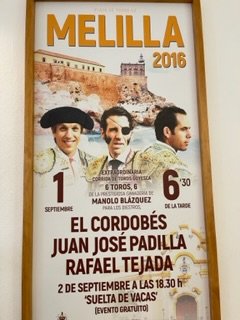
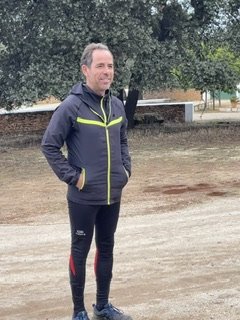
Rafael Tejada
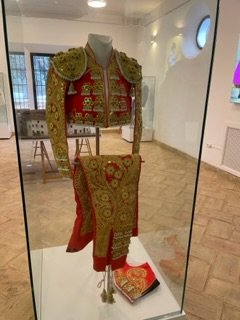
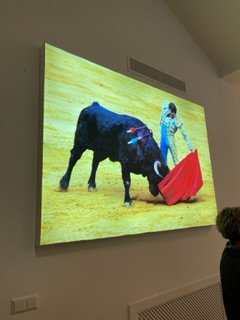
Rafael with the bull in the ring
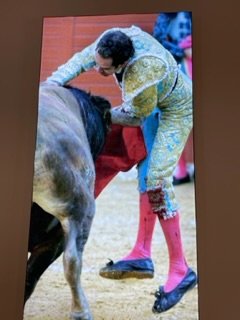
The moment of death for the bull as the sword is plunged in.
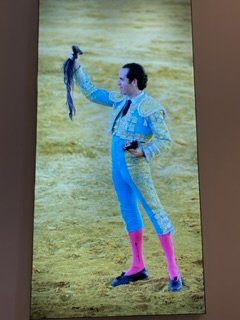
Holding the ears and the tail of the slain bull

Training the Spanish horses
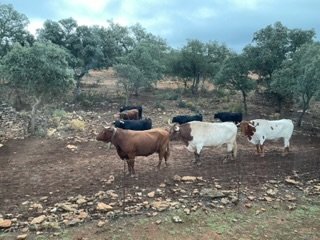

The bulls
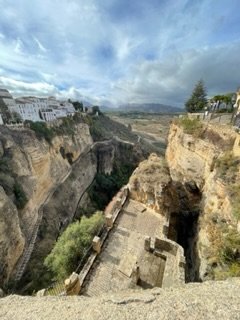
Puente Nueva bridge canyon

Puente Nueva bridge
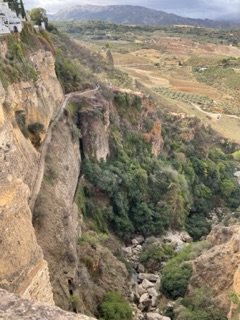
The canyon
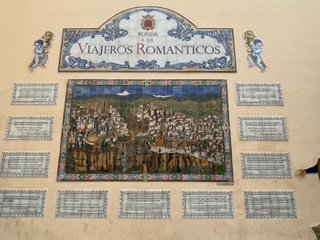
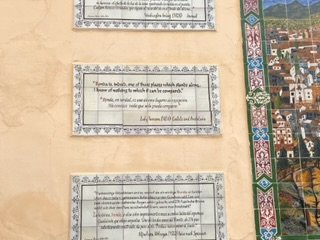
Quotes about the city of Ronda.
